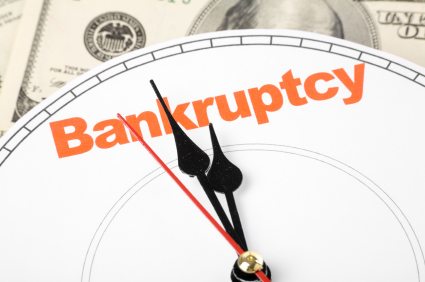LegalMatch Data Shows Chapter 7 Bankruptcies Decreased
 By filing for bankruptcy, a consumer is stating in legal terms that he cannot pay his creditors. While creditors have the option of filing a bankruptcy petition against a consumer debtor, most bankruptcies are filed by the debtor. According to the National Bankruptcy Research Center, 1,064,927 consumers filed for personal bankruptcy in 2008, a 33% increase from 2007. Filings are expected to rise again in 2009 because the primary reasons for this trend – the sagging economy, housing crisis, and credit crunch – are not likely to be resolved in the near future.
By filing for bankruptcy, a consumer is stating in legal terms that he cannot pay his creditors. While creditors have the option of filing a bankruptcy petition against a consumer debtor, most bankruptcies are filed by the debtor. According to the National Bankruptcy Research Center, 1,064,927 consumers filed for personal bankruptcy in 2008, a 33% increase from 2007. Filings are expected to rise again in 2009 because the primary reasons for this trend – the sagging economy, housing crisis, and credit crunch – are not likely to be resolved in the near future.
However, there were still fewer filings in 2008 than in 2005 and earlier, prior to the enactment of the Bankruptcy Abuse Prevention and Consumer Protection Act (BAPCPA). The BAPCPA overhauled important parts of the Bankruptcy Code, and made it more difficult for consumers to file for Chapter 7 bankruptcy. For instance, the BAPCPA requires debtors filing for Chapter 7 to wait eight years between filings, and the BAPCPA raised the asset and income requirements needed to qualify for Chapter 7. Consumers bringing home incomes that exceed their state’s median income level, and who can pay at least $6,000 over five years must instead file for Chapter 13. The new law pushed Chapter 13 filings up from 24% in 2005 to 41% in 2008.
What’s the difference between Chapter 7 and Chapter 13? By filing for Chapter 7, an individual agrees to have his assets liquidated in order to pay creditors; in return, the debtor is able to discharge some of his debts. Under Chapter 13, the debtor keeps ownership and possession of his assets, but agrees to pay some of his future income to creditors under a debt repayment schedule.
I looked at LegalMatch.com data from 2005 to 2008 to investigate these trends for myself. In 2005, 74% of consumer clients wished to discharge all of their debts, while only 7% wished to repay them over time. In 2006, 66% sought to discharge their debts completely, while 12% sought to make payments. In 2007, 65% sought to discharge all debt, while 13% sought to repay. And in 2008, 66% sought to discharge, while 11% opted to repay.
In sum, it appears that the BAPCPA has been successful in prompted consumers to increasingly seek repayment (Chapter 13) over total discharge (Chapter 7). However, the law’s goal of reducing overall findings is being somewhat thwarted by the tumultuous economic climate.


Comments
aha